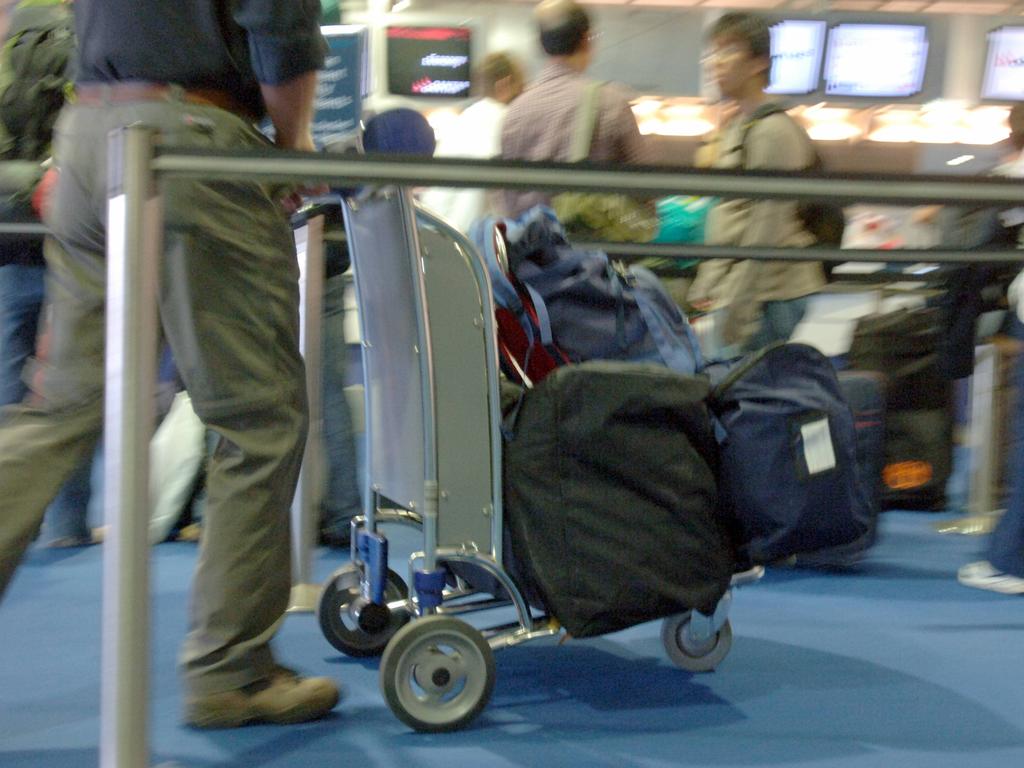
When net overseas migration (the difference between long-term arrivals and long-term departures) makes up two-thirds of our population growth and our population is expanding at the rate of another Canberra every year, most sensible people think we have a problem.
At a minimum, it is surely obvious that the benefits of immigration at this scale are offset by costs, and that these costs are not borne evenly across people or place. These costs are wide-ranging in kind: lower wage growth, particularly for unskilled and semi-skilled workers; urban congestion; loss of urban amenity and social cohesion; and pressure on services, including health and schooling.
But the Big Australia urgers are a pushy lot, not keen to truck opposition to the policy settings that often underpin their commercial interests. The property industry is an obvious member of this club, with the companies reliant on more and more clients to purchase or rent their often shoddy constructions.
More recently, the universities and other educational institutions have joined the club. They have become increasingly reliant on international students to fund outsized managerial salaries, vast building programs and selected research activities, even if this has come at the expense of the quality of the education, particularly for local students.
Less forgivable is the unrelenting academic and bureaucratic support for high rates of immigration, even in the face of the obvious challenges these high rates create. The demographers at the Australian National University — note they are not economists — are a standout example here, but there are others.
The Treasury is well known for its support of Big Australia, something that has been reinforced by the creation of a separate propaganda unit called the Centre for Population. Its recently released Population Statement is not only extremely sloppy, it is also lopsided.
Take the following quote: “Migration is important in ameliorating some of the economic impacts of our ageing population, as migrants tend to arrive at a younger age than the average Australian. This means they are generally in a position to contribute to our workforce, and have a higher participation rate than the rest of the population. Because migrants tend to arrive at a relatively young age, they are also more likely to be in a position to have children. This means their arrival not only contributes to immediate population growth, but also future population growth through their children.
“If there were no future migration … we would miss out on the demographic and economic benefits migrants bring by increasing the proportion of people working and paying income tax, and decreasing the proportion of people drawing on government services.”
Where do you start? Obviously, the authors are unaware of the careful work done by the Productivity Commission to demonstrate that immigration has no noticeable impact on the demographic composition of population, in part because migrants themselves age.
As for the notion that migrants come to Australia merely to pay taxes so we can all benefit, this is naive beyond belief. Recently, most migrants have not been paying taxes at all given the slant towards working holiday makers and international students working part-time. And then we have the parent visa entrants sponsored by their children; they won’t be paying taxes.
It’s not clear that just having more people really does anything to our fiscal position, either federally or at the state level.
Let’s also not forget that it’s GDP per capita, not GDP, which drives living standards. Of course, having more people will expand GDP. But over the past decade or so, we have had large-scale immigration associated with stalling per capita GDP growth (and associated sluggish productivity growth).
We now have the Reserve Bank’s wavering position on immigration. At one stage, the governor, Philip Lowe, flagged his support for Big Australia by telling the assembled audience: “Our immigration program I see as a source of national strength. To give that advantage up just so that we can take some pressure off housing prices, I find kind of problematic.”
At another venue he talked favourably about the impact of immigration on innovation, although he provided no evidence of the link.
But the RBA has now gone 180 degrees on immigration, acknowledging that all along immigration was suppressing wage growth by bringing in more workers and that lower population is likely to be associated with higher per capita GDP.
The point is we have a good experiment here: large scale immigration followed by no immigration, and we can trace the effects in the labour market. Unemployment has fallen much more rapidly than expected and wage pressures are emerging. (Hey, the labour market is a market after all.)
In its recent quarterly statement on monetary policy, the RBA remarked that “a sustained period of economic recovery could lead to wages pressures emerging more quickly if new labour supply remains constrained, particularly and foremost in areas of domestic skills shortages and where substantial time is involved in upskilling domestic workers”.
It goes on: “The level of GDP is still expected to remain a little below that forecast before the pandemic, mostly due to lower population growth; in per capita terms, GDP is expected to be on a higher trajectory.”
It’s not just the RBA making these points. A number of the big-bank economists have come around to this point of view, including Gareth Aird of Commonwealth Bank. Professor Ross Garnaut has observed that recent migrant intakes have not been mainly made up of skilled workers — even among the permanent intake — and have been a drag on Australia’s economic performance.
Saul Eslake has done the arithmetic to show the much lower growth in employment that is now required to soak up the growth in the labour force, meaning bigger falls in unemployment can come sooner.
The key question is: will the government fall for the Big Australia trap when the international borders are finally opened up?
According to Treasury’s Population Statement, there is an expectation that net overseas migration will return to its pre-pandemic levels (around 250,000 extra persons per year), which doubtless will form the basis of its advice.
Recent comments made by the Treasurer indicate that he will be more than willing to accept this shoddy advice.
It’s critical that other voices are heard. Thankfully, the number of these alternative voices is increasing, as well as the noise they are making.








Telling everyone that I told you so can be a tad churlish, but I’m sure many readers will forgive me if I say I told you so. Among a very short list of other commentators, I have been pointing out the downsides of our rapid population growth based on very high rates of immigration for years.